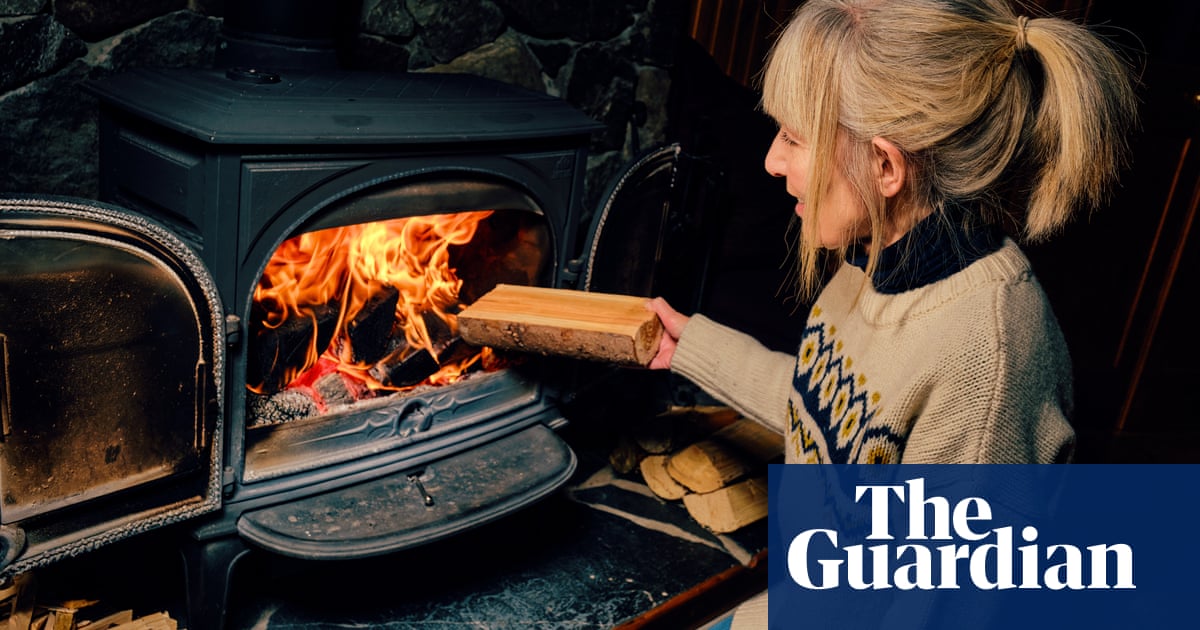
A sharp rise in wood burning in urban areas could be bringing harmful pollution to greater numbers of people, and shifting the pattern of pollution from poorer to more affluent areas, one of the UK’s leading air pollution experts has warned.
Currently, air pollution monitoring focuses on busy roads, which have been the main hotspots for fine particulate matter (known as PM2.5) and other air pollutants, largely from diesel vehicles.
That means researchers could be missing the creation of new hotspots from wood-burning stoves, warned Gary Fuller, of the school of public health at Imperial College London.
“There is certainly a concern that we are creating new air pollution hotspots, including in more affluent areas, where people do not think of their environment as being polluted,” Fuller told the Guardian.
“As a first step people have to understand that the wood smoke that they smell could be harming their health. People perceive wood smoke to be harmless because it comes from a natural fuel. People need to understand that the wood smoke that fills their neighbourhood is as harmful as the air pollution from traffic or industry,” he said.
He pointed to a recent study in Islington, in north London, where walkers with backpacks were able to track sources of solid fuel pollution.
PM2.5 pollution has been linked to a wide range of health problems, from heart failure and lung problems to dementia and mental illness in children.
Fuller said: “My inbox is already full of people who are breathing wood smoke from their neighbours. These are typically people who care for someone else and are worried about the smoke filling the bedroom of their asthmatic child or elderly relative.”
Fuller has sent researchers to some of London’s streets with backpacks to check on air pollution from wood-burning stoves.
Such research is still in its early stages, and much more needs to be done, but Fuller said there were already indications of possible hotspots, likely to be from wood burning, that were being missed by static monitors at busy roads and junctions.
Wood-burners are also likely to be affecting many more people than conventional pollution patterns focused on roads, Fuller added. That is because people tend to use their boilers mainly in the evenings, when their neighbours are more likely to be at home, and therefore exposed to the smoke.
That contrasts with patterns of pollution from traffic, which tend to be worst at busy times of day and fall off in the evening when people are more likely to be at home.
“People burn wood on cold winter nights when their neighbours are at home,” Fuller said. “Air pollution can settle over an area, meaning that more people can be exposed than those that experience traffic pollution from busy roads.”
Research by Kantar for the Department for Environment, Food and Rural Affairs has shown that wood-burners are increasingly a middle-class purchase, with almost half bought by people in the upper AB social grades. About four in 10 households with indoor burners owned their home outright, and fewer than one in 12 were renters, compared with households without burners of whom about a quarter were from AB social grades and more than a third rented.
The implications of these changes to pollution patterns, and the potential for much broader exposure to pollution, have not yet been fully taken into account in government policy, Fuller added, and more research and monitoring was needed.
Last week, the environment secretary, Thérèse Coffey, announced more stringent standards for new wood-burning stoves but stopped short of new measures to curb existing stoves, insisting instead that people should be “educated” in how to use them rather than subjected to “fingerpointing”.
She said councils could use their existing powers to curb sources of air pollution under the 2021 Environment Act, which include levying fines in smoke control areas.
But local governments told the Guardian they were too cash-strapped to undertake the extra monitoring and enforcement that would be necessary for a crackdown, without new funds from central government.
An increasing proportion of air pollution in urban areas is coming from wood-burning stoves, which have taken in off in popularity in recent years, partly for aesthetic reasons and in some cases in response to the high price of fossil fuels.
Many wood-burning stoves are sold on their supposedly green credentials, as trees can be regrown, and absorb carbon from the air as they do. But environmental campaigners point out that in fact wood-burning on a large scale does not benefit the climate, as the carbon from burning is released into the atmosphere now but trees take up to a century to regrow and store the equivalent emissions.
The Committee on Climate Change, the statutory adviser on greenhouse gas emissions, has called for domestic wood burning stoves to be phased out.












